I know IEnumerable.ToList() is supposed to create a new List, but with the items pointing to the same original items in the IEnumerable, as discussed at ToList()-- Does it Create a New List?
However, I'm getting some strange behavior with my code using VS 2012; WPF; and .NET 4.0. It started when IEnumerable.SequenceEquals() seemed not to work as I expected. I dug around with my QuickWatch dialog, and, unbelievably, the following statement evaluates to false:
this.Items.First () == this.Items.ToList ()[ 0 ]
I even tried:
this.Items.ToList ().IndexOf(this.Items.First ())
which evaluated to -1.
Items is declared as a property on a WPF custom control, like so:
public static readonly DependencyProperty ItemsProperty = DependencyProperty.Register (
"Items",
typeof ( IEnumerable<UserLayoutType> ),
typeof ( UserLayoutSelectorControl ),
new FrameworkPropertyMetadata ( null, FrameworkPropertyMetadataOptions.AffectsRender, UserLayoutSelectorControl.PropertyChanged ) );
public IEnumerable<UserLayoutType> Items
{
get
{
return ( IEnumerable<UserLayoutType> ) this.GetValue ( UserLayoutSelectorControl.ItemsProperty );
}
set
{
this.SetValue ( UserLayoutSelectorControl.ItemsProperty, value );
}
}
UserLayoutType is simply a class generated by the XSD tool, with the following declaration:
//
// This source code was auto-generated by xsd, Version=4.0.30319.17929.
//
namespace MyAssays.UserLayoutCore.UserLayoutUtility {
using System.Xml.Serialization;
/// <remarks/>
[System.CodeDom.Compiler.GeneratedCodeAttribute("xsd", "4.0.30319.17929")]
[System.SerializableAttribute()]
[System.Diagnostics.DebuggerStepThroughAttribute()]
[System.ComponentModel.DesignerCategoryAttribute("code")]
[System.Xml.Serialization.XmlRootAttribute("UserLayout", Namespace="", IsNullable=false)]
public partial class UserLayoutType {
This are the methods on a factory class that create the UserLayoutType Items in the first place:
public static IEnumerable<UserLayoutType> CreateFromFolder ( string folderPath )
{
if (String.IsNullOrEmpty(folderPath))
throw new ArgumentNullException("folderPath", "Folder path must not be null");
var userLayoutXmlFilePaths = Directory.GetFiles ( folderPath ).Where ( filePath => filePath.EndsWith ( ".UserLayout.xml", StringComparison.InvariantCultureIgnoreCase ) );
return userLayoutXmlFilePaths.Select(filePath => UserLayoutFactory.CreateFromFile(filePath));
}
public static UserLayoutType CreateFromFile ( string filePath )
{
using ( var stream = new StreamReader ( filePath ) )
{
return ( UserLayoutType ) new XmlSerializer ( typeof ( UserLayoutType ) ).Deserialize ( stream );
}
}
Anybody have any idea what is happening? See image below:
